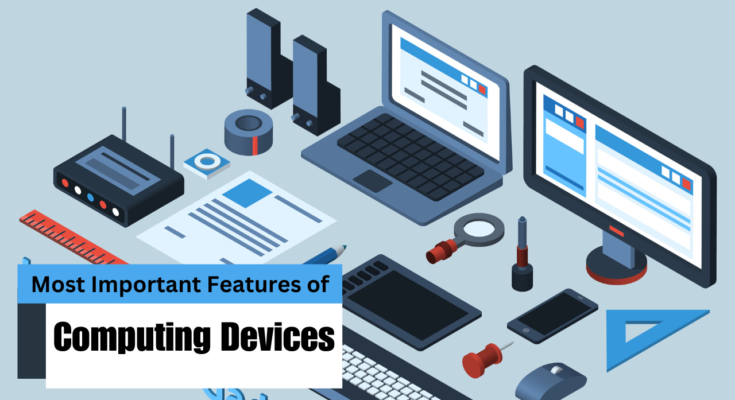Most Important Features of Computing Devices:
Computing Devices have become an essential element of modern life, providing tools for communication, work, entertainment, and much more.
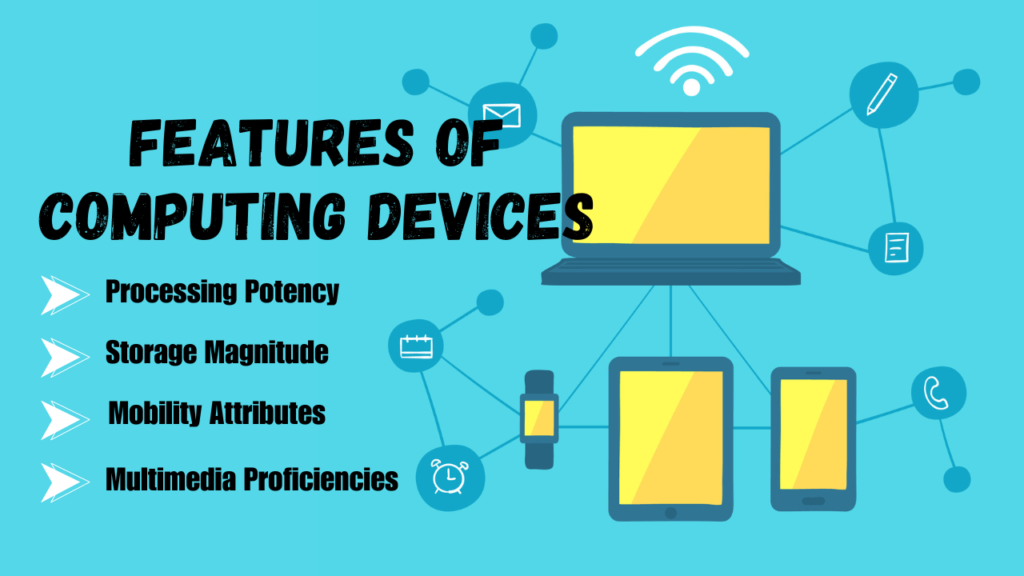
From smartphones and tablets to laptops and desktop PCs, these gadgets provide a plethora of features aimed at improving user experience and functionality. In this post, we will look at some of the most essential Features of Computing Devices that influence their usability and performance.
1. Processing Potency
An elemental facet underpinning computational devices lies within their processing potency. The velocity and efficacy of the central processing unit bear a significant bearing on the apparatus’s adeptness in expeditiously and seamlessly executing tasks. Contemporary computational devices frequently incorporate multi-core processors, affording parallel processing capabilities and bolstered performance, notably in scenarios entailing multitasking or the operation of resource-intensive applications.
2. Storage Magnitude
Another important feature of computing devices is storage capacity, which determines the amount of data that can be stored locally, including apps, documents, multimedia files, and so on. Variegated storage media, including Random Access Memory (RAM), Read-Only Memory (ROM), Hard Disc Drives (HDD), and Solid State Drives (SSD), provide varying degrees of speed and reliability, influencing overall system performance and responsiveness.
3. Visual Fidelity
The caliber of visual presentation assumes a critical role in shaping the user experience offered by computational devices. High-resolution screens with vibrant colors and sharp contrast levels improve visual clarity and satisfaction, whether for video watching, picture browsing, or graphical content production. Different display technology, such as Liquid Crystal Display (LCD), Organic Light-Emitting Diodes (OLED), and Active-Matrix Organic Light-Emitting Diodes (AMOLED), provide different advantages in terms of brightness, energy efficiency, and color accuracy.
4. Energy Reserve
The endurance of battery life constitutes a pivotal consideration for portable computational devices like laptops, tablets, and smartphones. Prolonged battery longevity ensures uninterrupted usage over protracted intervals, spanning professional undertakings or leisurely pursuits. Variables such as hardware efficiency, software optimization, and user conduct wield influence over battery lifespan, with advancements in battery technology engendering augmented energy density and expeditious charging capabilities.
5. Connectivity Modalities
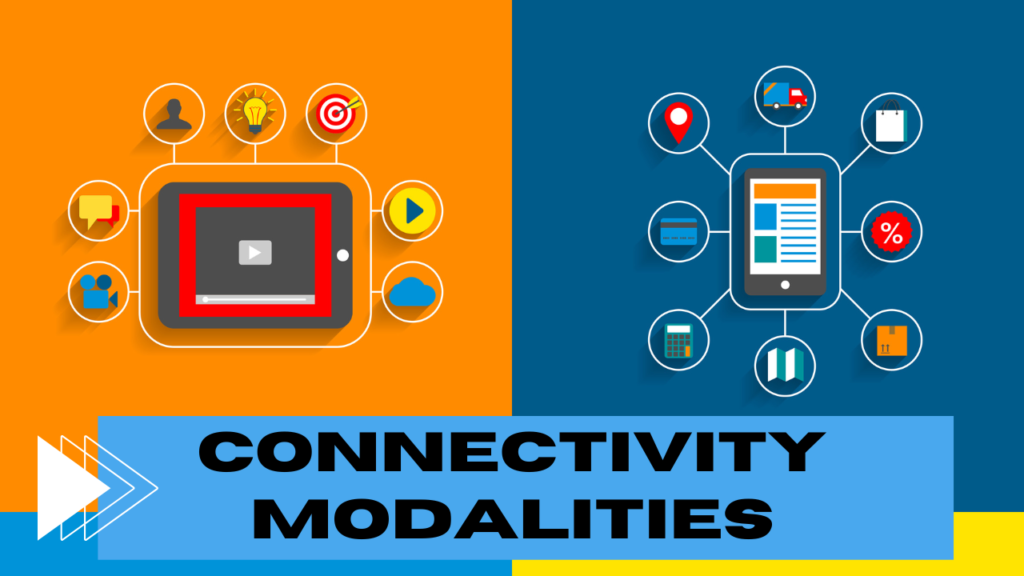
Seamless interfacing with networks and auxiliary devices stands as a requisite attribute for computational devices. Wi-Fi, Bluetooth, and Near Field Communication (NFC) technologies improve wireless communication by speeding data exchange, peripheral connectivity, and internet access. Robust and quick connectivity boosts productivity and convenience regardless of the location—home, business, or when travelling.
6. Operational Infrastructure
The choice of an operational infrastructure has a significant influence on the functioning and user experience of computing devices. Popular operating systems such as Windows, macOS, Linux, Android, and iOS have unique functionality, interface aesthetics, and software ecosystems that cater to a wide range of user preferences and requirements. Users may customize gadgets to meet their specific needs and interests.
7. Security Protocols
Security stands as an overriding concern in the realm of computational devices, given the escalating specter of cyber intrusions and data breaches. Biometric authentication mechanisms such as fingerprint recognition and facial authentication furnish augmented security and convenience, facilitating device unlocking and access to sensitive information. Encryption methodologies and security protocols safeguard data confidentiality and integrity, thereby instilling users with a sense of assurance.
8. Mobility Attributes
The portability quotient of computational devices exerts a profound bearing on their utility and adaptability across sundry milieus. Compact form factors coupled with lightweight constructions render laptops, tablets, and smartphones eminently portable, enabling facile transport and utilization during jaunts, business engagements, or outdoor pursuits. Portability augments mobility and versatility, affording users uninterrupted connectivity and productivity regardless of locale.
9. User Interface Dynamics
An intuitive user interface constitutes a sine qua non for computational devices to deliver a seamless and gratifying user experience. Touchscreens, keyboards, trackpads, and alternative input mechanisms necessitate responsiveness and user-friendliness, catering to diverse proclivities and accessibility imperatives. An intuitive UI/UX design augments usability and operational efficiency, empowering users to navigate and interact with devices sans impediments.
10. Sturdiness and Fabrication Eminence
The robustness and construction quality of computational devices delineate their resilience vis-à-vis physical duress and wear over time. Stalwart fabrication employing premium-grade materials engenders longevity and reliability, even amidst taxing environs or usage scenarios. Resilient devices withstand collisions, spills, and inadvertent mishaps, thereby preserving performance and aesthetics across protracted durations.
11. Multimedia Proficiencies
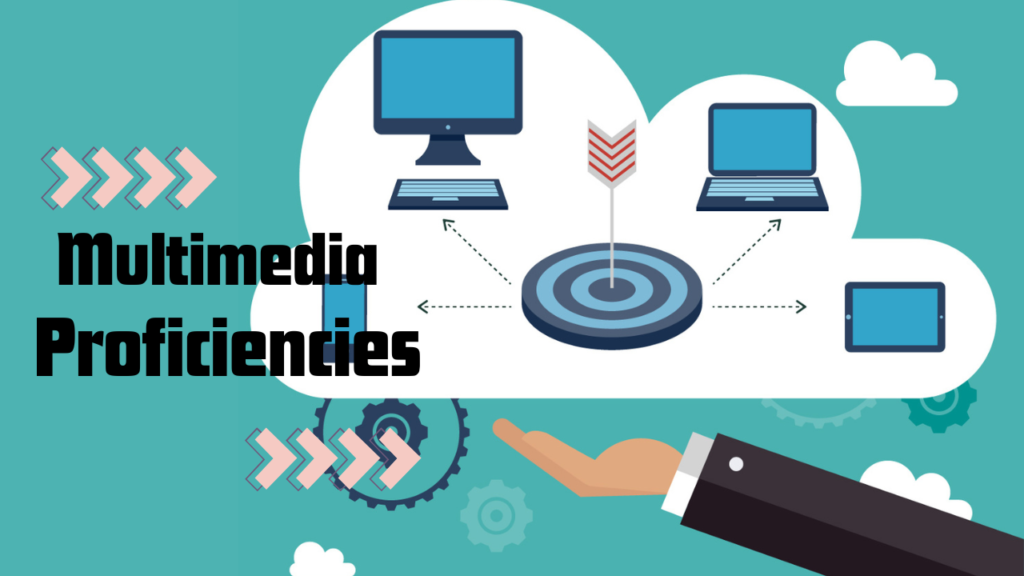
Multimedia capabilities serve to enrich the entertainment and creative gamut of computational devices. High-fidelity audio and video playback complemented by sophisticated camera functionalities furnish users with immersive media encounters and the ability to capture indelible moments replete with clarity and finesse. Multimedia Features of Computing Devices cater to the predilections of content creators, gamers, and aficionados of multimedia.
12. Software Ecosystem
The proliferation of a diverse array of applications and software enhances the functionality and versatility of computational devices. A robust software ecosystem affords access to productivity suites, entertainment repositories, communication platforms, and specialized software tailored to myriad vocations and interests. Compatibility with third-party services and platforms expands the repertoire of computational devices, facilitating seamless integration and collaborative endeavors.
13. Expandability and Sustenance
The ease with which components can be upgraded and devices maintained assumes salience in bolstering long-term utility and sustainability. Modular designs and accessible hardware components empower users to effectuate upgrades encompassing memory augmentation, storage expansion, and ancillary enhancements, thereby prolonging the operational lifespan of devices and fostering adaptability to evolving exigencies.
Common Computing Devices with their Features:
Laptops:
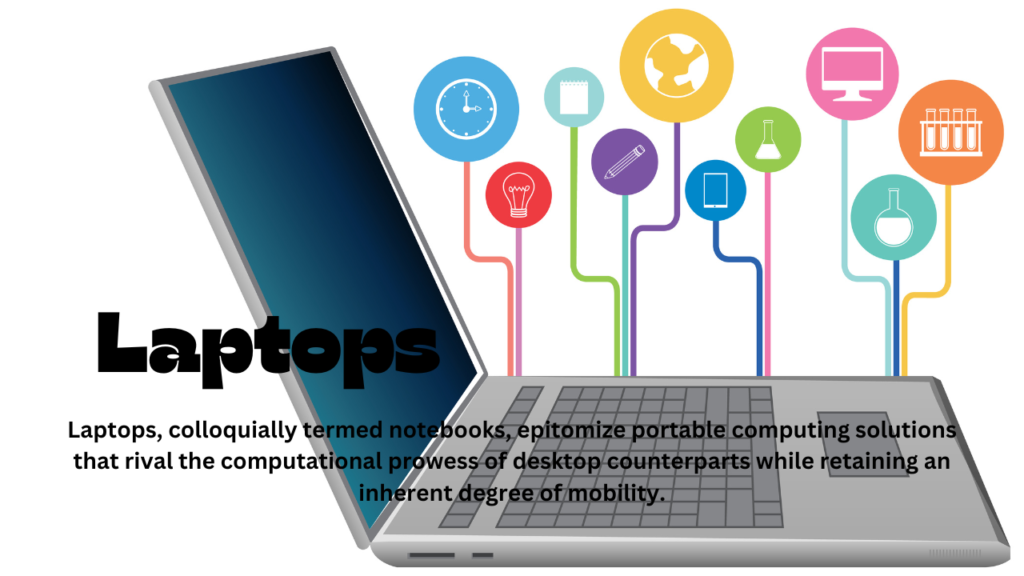
Laptops, colloquially termed notebooks, epitomize portable computing solutions that rival the computational prowess of desktop counterparts while retaining an inherent degree of mobility. Powered by AC adapters or rechargeable batteries comprising Nickel-Metal Hydride (NiMH), Nickel-Cadmium (NiCad), or Lithium-Ion (Li-ion) variants laptops epitomize the quintessential Features of Computing Devices, augmented by an integrated display unit. Aligned with conventional desktops, laptops operate on established operating systems like Windows, macOS, or Linux, featuring multiple USB 2.0/3.0 ports for peripheral expansion, alongside one or more video output ports.
Integral audio capabilities and, in certain instances, an optical disc drive further augment the feature set. Webcam functionality facilitates video conferencing, while touchpads or touchscreens obviate the need for external pointing devices. The functional parity between laptops and desktops manifests in the former’s ascendancy in sales vis-à-vis the latter, substantiating their ubiquity in contemporary computing landscapes.
Mobile Phone:
In mobile communication, smartphones emerge as a distinguished cohort of cellular gadgets, embodying versatile attributes that transcend conventional feature phones. Their hallmark lies in the fusion of sophisticated hardware capabilities with expansive mobile operating systems, fostering a myriad of software applications, unfettered internet access facilitated by mobile broadband, and an array of multimedia functionalities encompassing music playback, video streaming, photography, and gaming, alongside fundamental telephonic utilities such as voice calls and text messaging.
Smartphones have garnered widespread adoption among users for pursuits like electronic mail correspondence, web navigation, and textual/video interaction, eclipsing the prominence of traditional voice calls. A notable phenomenon is the evolutionary prowess of contemporary smartphones, surpassing the computational prowess of desktop counterparts from a decade past, boasting accelerated processors, augmented RAM, amplified storage capacities, integrated cameras, video capture capabilities, and music playback functionalities.
Certain models exhibit provisions for expandable storage through microSD cards. The innate capacity to interface with cellular networks for voice and data communication, complemented by Wi-Fi connectivity for data transmission and, occasionally, voice communication, confers upon smartphones an unparalleled versatility adaptable to various environments. The utilization of Wi-Fi connectivity obviates the depletion of cellular minutes or data allotments during communication.
Tablets:
Tablets represent a niche within the realm of mobile computing, delineating a form factor designed for handheld operation with one or two hands. Their dimensions approximate those of a hardcover book, typically exceeding seven inches, evoking resemblance to an oversized smartphone. Functionally akin to traditional computers, tablets facilitate internet browsing, integration with social networking platforms, and high-definition video playback. They excel in applications necessitating minimal user input precision.
Tablets signify a progression beyond smartphones in storage capacity, screen real estate, and RAM allocation. When paired with a wireless keyboard, tablets metamorphose into potent mobile surrogates for conventional computers, amenable to tasks like web surfing, email correspondence, and lightweight office applications. Several tablet iterations feature expandable storage via microSD or SD cards. Equipped with Wi-Fi and Bluetooth connectivity, select tablets offer provisions for cellular connectivity, akin to smartphones, fostering seamless connectivity across diverse locales.
Workstations:
Workstations denote individual computing entities—or conglomerates thereof—catering to the exigencies of solitary users in professional settings. Conventionally, a workstation assumes the guise of a rudimentary desktop system, harmonizing essential functionalities like office suite integration, web browsing, and electronic mail access, often within a networked environment conducive to printing and internet connectivity.
Occasionally, workstations transcend the conventional desktop or laptop paradigm, embodying augmented computational capabilities tailored to specialized domains like 3D Computer-Aided Design (CAD), multimedia editing, or virtualization pursuits. Endowed with purpose-built processors, graphics accelerators, and ancillary components, these workstations epitomize computational robustness requisite for intricate workloads.
Servers:
Servers represent the backbone of networked computing paradigms, encompassing both hardware and software components tasked with processing and servicing requests disseminated across interconnected nodes. In the lexicon of networking, the term “server” connotes a computational entity that, upon receipt of a request, furnishes requisite resources or information to the requesting node—termed a client. Within internet infrastructures, servers assume multifaceted roles, including but not limited to hosting web content, facilitating email exchange, or serving as repositories for data storage and retrieval.
Characterized by optimized configurations tailored to accommodate heightened throughput demands, servers typically integrate multicore CPUs, Gigabit or 10G Ethernet interfaces, redundant RAID storage arrays, and substantial RAM allocations fortified with error-correction capabilities. Control mechanisms may entail direct interaction via conventional peripherals or remote administration facilitated by Keyboard, Video, Mouse (KVM) switches or remote desktop software.
Gaming Consoles:
Gaming consoles epitomize specialized computing platforms engineered to cater exclusively to interactive video gaming experiences. Comprising akin hardware components to conventional personal computers—central processing units (CPUs), graphics processing units (GPUs), and Random Access Memory (RAM)—gaming consoles proffer bespoke interfaces and expansion options tailored to gaming exigencies, such as proprietary controllers and supplemental storage solutions. Contemporary gaming console iterations integrate Blu-ray disc drives, augmenting their utility beyond gaming realms.
Unlike conventional PCs, the upgradeability of gaming consoles is circumscribed, with hardware augmentation limited to discrete models boasting incremental enhancements in performance and feature sets. For instance, the Sony PlayStation 4 Pro, vis-à-vis its antecedents, boasts augmented USB connectivity, accelerated processing capabilities, and heightened support for 4K video output. Analogously, the Microsoft Xbox One X exhibits elevated RAM capacities and accelerated processing prowess, accentuating the immersive potential of gaming experiences.
Internet of things(IoT):
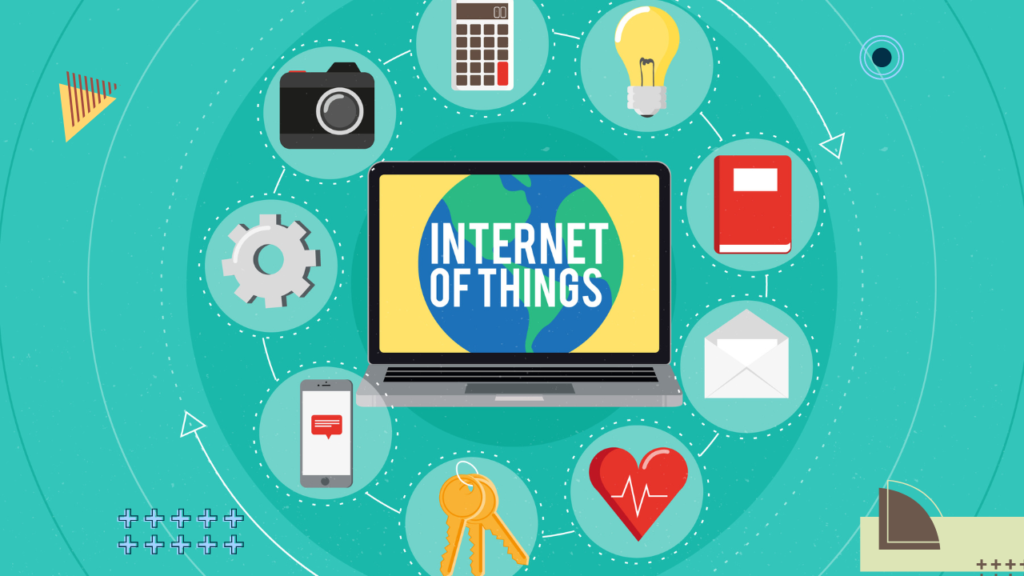
The Internet of Things(IoT) delineates a framework comprising interconnected computational contrivances, mechanical and digitized contraptions, and entities endowed with distinct designators (UDs) and the faculty to convey information across a lattice without necessitating human-to-human or human-to-machine interaction. IoT contrivances are predominantly not comprehensive computing apparatuses, yet, contingent on the contrivance, encompass sensors, regulators, or other constituents that are internet-enabled.
IoT contrivances are contrived to collaborate with particular applications. It may become requisite to install an application on your cellular device to authorize a linkage to a specific IoT contrivance. The association between domicile automation frameworks and yourself usually transpires via an ingenious assistant application, attainable through your cellular device or astute vocalizers. Various antagonistic technologies exist (Apple HomeKit, Nest, Amazon Echo/Alexa, Google Home, Microsoft Cortana, and IFTTT). Fortunately, numerous commodities endorse more than one technology.
Conclusion:
In the ever-evolving landscape of computing devices, several crucial Features of Computing Devices stand out, shaping their utility and performance. Processing power, storage capacity, and visual fidelity are paramount for seamless operations and user satisfaction. Connectivity options, security protocols, and mobility attributes further enhance their versatility and convenience. With robust infrastructure, intuitive interfaces, and multimedia capabilities, these devices cater to diverse needs, augmented by expandability and sustainability. From smartphones to workstations, each device category offers unique functionalities, bolstered by a rich software ecosystem and integration with IoT technologies, promising a dynamic and interconnected future.
